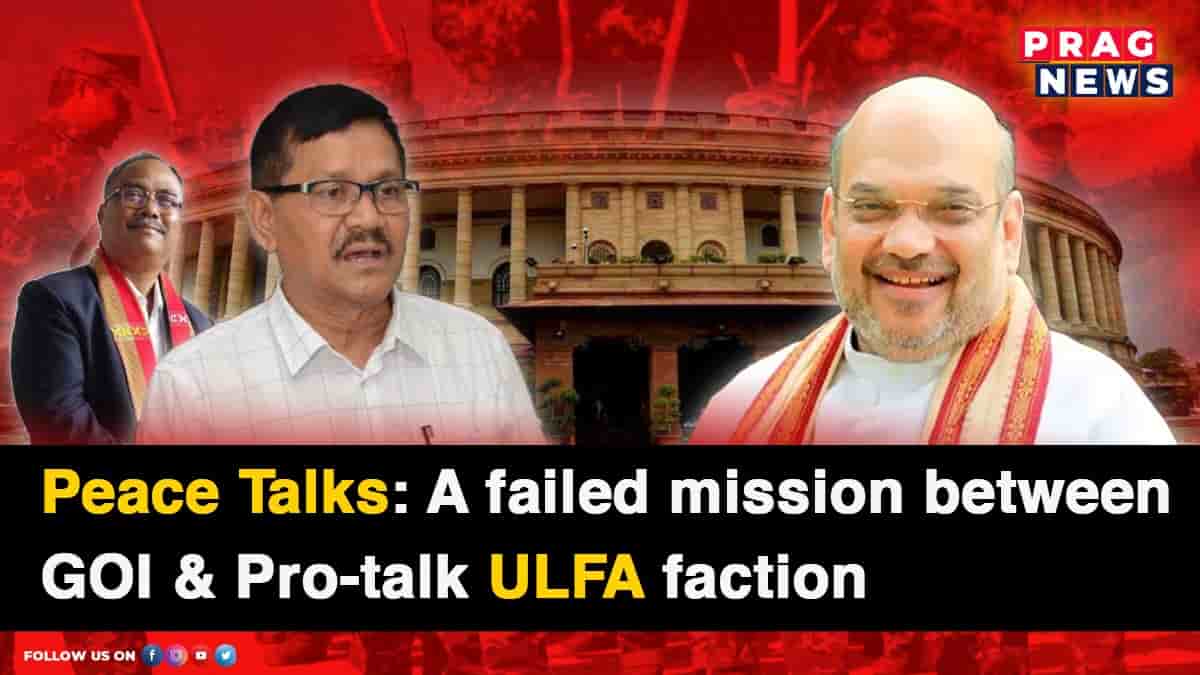OffBeat
This is not the first time that a female commando has been part of the SPG…
Digital Desk: A photo of a

Digital Desk: There has always been a general agreement for a much needed talk between the government and ULFA-I in order to end the deadlock between the two and usher in a new beginning, thus bringing down the decade long era of blood-shed and a ‘false’ notion of nationalism in the garb of military activities.
But what has hit the parley? No interlocutor has been appointed by the government of India for peace talks for the past one year.
Speaking to a regional daily, general secretary of pro-talk faction of the ULFA, Anup Chetia said that the last round of talks with the Government of India’s interlocutor AB Mathur was held in January and whose term ended in March. But till date, the Government has neither extended the term of Mathur nor appointed a new interlocutor.
Also read: CM Sarma busy with his official tasks even inside the plane, but who clicked the pic?
For the unversed, the insurgent organization, the United Liberation Front of Asom (ULFA), was established on 7 April 1979, at the royal amphitheatre of the Ahoms called the Rang Ghar, in Sivasagar district in the Indian state of Assam. The armed struggle led by ULFA aimed at establishing swadhin Asom (independent Assam) against the alleged illegal occupation of Assam by India and the exploitative policies of the central government in New Delhi towards the resource-rich state of Assam. ULFA’s movement ran parallel to the Assam agitation against illegal immigration. The agitation ended with the signing of the Assam Accord in 1985 by the then Prime Minister of India, Rajiv Gandhi, and representatives of the All Assam Gana Sangram Parishad (AAGSP) and All Assam Students’ Union (AASU). However, dissatisfied with the accord, ULFA’s movement continued, and its members took up weapons to fight for a sovereign Assam. In fact, many members of AASU and Asom Jatiyatabadi Yuva Chattra Parishad (AJYCP), who actively participated in the Assam agitation, had later joined ULFA.
Initially, as an overground organization, ULFA had recruited cadres from almost every district in Assam due to the mass support it enjoyed. Part of its success was due to what Uddipan Dutta aptly phrased, the Robin Hood image that the organization cultivated.2 From being social vigilantes, ULFA soon took upon itself the obligation to secure justice on its terms, most of which involved the use of violence. ULFA leadership was trained at the camps of the undivided National Socialist Council of Nagalim (NSCN) beginning in 1983 at the Ukhrul district, which was followed by new groups being trained at Kachin.3 As long as its targets were non-Assamese, or for that matter non-indigenous, there was a comfortable silence on the plethora of killings carried out by ULFA that the Assam of the 1980s and 1990s had witnessed.
The organization, by and large, had justified those killings in the name of the nation. It was an open secret during the time that ULFA was patronized by the regional political party, the Asom Gana Parishad (AGP), formed in 1985 as a result of the Assam Accord.4 It is only in more recent times that ULFA has spoken about the help it extended to the then students’ leaders in executing political murders. Those same people today occupy political positions.5
ULFA had aimed to bringing peace through unleashing violence against its ‘enemy’ that primarily comprised of the government in New Delhi. To pressurize the government, the insurgent organization had resorted to killings, abductions, extortions, and bomb blasts, most of which had paralyzed civilian life. In retaliation, the state of Assam was declared a ‘disturbed’ region on 28 November 1990, thereby empowering the armed forces with special powers of impunity to carry out operations under the Armed Forces (Special) Powers Act (AFSPA) in Assam.
On 29 November 1990, the first major army operation against ULFA, codenamed Operation Bajrang, was declared and ULFA was banned. Ever since 1990, there have been multiple army operations against the militant group, both in Assam and outside Indian territory. Some of the major operations include Operation Rhino I and II in 1991 and 1992, respectively; Operation All Clear in Bhutan in 2003, in collaboration with the Royal Bhutan Army; and most recently, Myanmar’s Tatmadaw occupied insurgent camps in the Taga region, in 2019. The unarmed civilians in Assam, no matter to which community they belonged, have been at the receiving end in this violent struggle between state and anti-state entities. This necessitated the urgency of peace talks at different moments in the political history of Assam.
Also read: Chandra Mohan Patowary orders suspension of three IWT officials
With Assam Chief Minister Himanta Biswa Sarma inviting ULFA (I) Chief Paresh Baruah to the negotiating table, there seems to be an effort on behalf of the state government in resolving the issues between the two, but then where is the interlocutor? Or is the government’s no appointment of interlocutor shows this entire process of calling ULFA (I) for peace talks a political gimmick, a farcical notion of the government’s interest in peace talks?
In its entirety, the deadlock continues to prevail between ULFA-I and the government even after one year since the government announced for peace talks with the insurgent group. On the other hand Paresh Baruah has maintained his stand on Assam’s sovereignty and protection of land of the indigenous people.
Leave A Comment